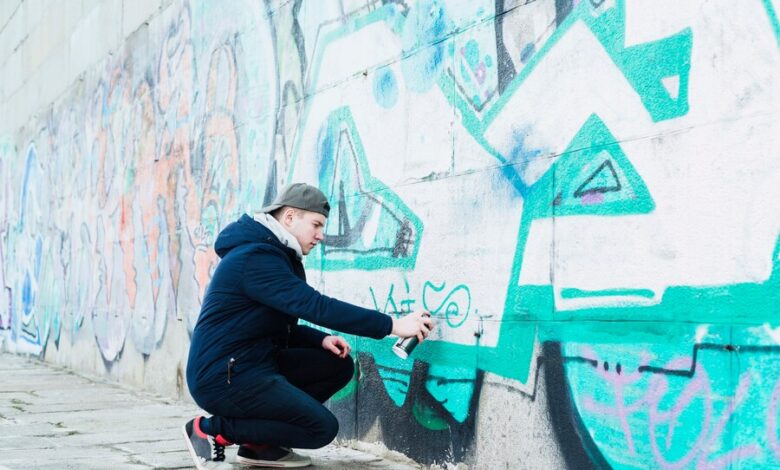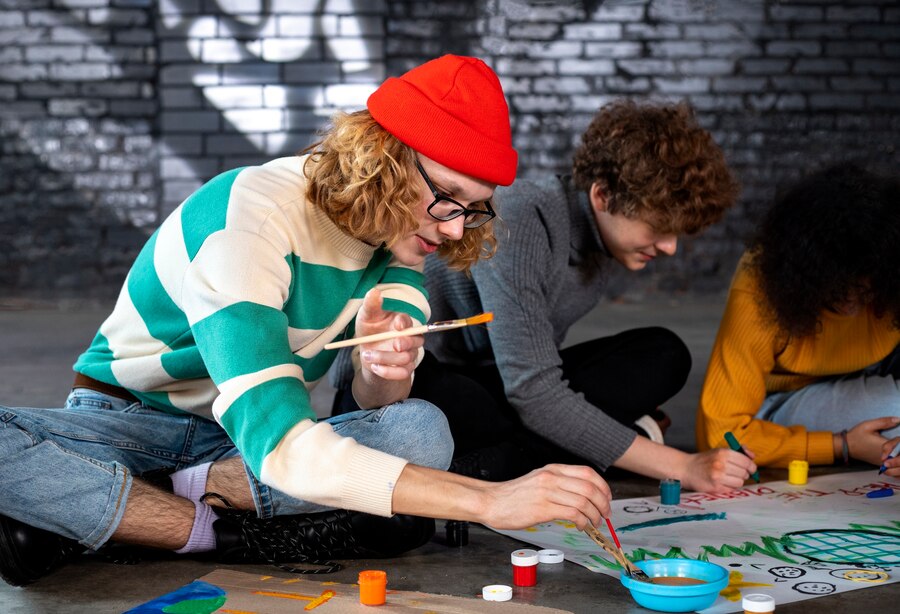Mastering the Urban Canvas with Graffiti Art

Graffiti is more than just colorful scribbles on walls; it is a vibrant and dynamic form of artistic expression that has significantly influenced urban culture. For anyone passionate about art, understanding how to create graffiti is a rewarding experience. This blog post will serve as your ultimate guide to drawing graffiti, offering valuable steps, tips, and techniques to help you get started and excel in this unique art form.
The Importance of Graffiti in Urban Culture
Graffiti has been a powerful voice for communities around the world. It often reflects social issues, political viewpoints, and personal stories. Unlike traditional art forms confined to galleries, graffiti is accessible to everyone, turning cityscapes into open-air art museums. For art enthusiasts and beginners alike, the beauty of graffiti lies in its ability to transform ordinary spaces into extraordinary visual experiences.
Graffiti’s role in urban culture cannot be overstated. It has evolved from an underground rebellion to a widely recognized and respected form of art. Famous artists like Banksy and Shepard Fairey have brought graffiti into the limelight, proving that street art can command both critical acclaim and a massive fan base.
If you’re eager to leave your mark on the world, graffiti offers a unique and impactful way to do so. But before you grab a spray can, it’s essential to understand the basics and develop a solid foundation.
Getting Started with Graffiti Art
Before you begin your graffiti journey, it’s crucial to gather the right materials and tools. Here’s what you’ll need:
- Spray Paint: The primary medium for graffiti. Opt for high-quality, durable paint available in various colors.
- Markers and Paint Pens: Useful for outlining and adding fine details.
- Protective Gear: Wear gloves and a mask to protect yourself from paint fumes.
- Sketchbook and Pencils: For planning and sketching your designs.
- Stencil and Templates (optional): These can help with intricate designs and text.
Investing in quality materials will make a significant difference in your work. High-quality spray paint ensures vibrant colors and longevity, while good markers allow for precision in details.
Safety should always be a priority. A mask and gloves will protect you from harmful chemicals, and appropriate clothing will keep you comfortable while you work.
Planning Your Design
Planning is a critical step in creating impactful graffiti. Start by choosing the right location. Look for legal walls or designated areas where graffiti is permitted. Unauthorized graffiti can lead to legal trouble and harm the perception of street art.
Next, sketch your design in a sketchbook. Use pencils to outline your ideas and experiment with different styles and compositions. Consider the message you want to convey and how your design will fit into the chosen space.
Here are some tips for planning your graffiti:
- Research: Look at existing graffiti for inspiration and understand current trends.
- Practice: Sketch multiple drafts before finalizing your design.
- Color Scheme: Choose colors that complement each other and stand out against the background.
Taking the time to plan your design will help you execute it more effectively and confidently.

Making Your Mark
Creating graffiti involves several steps, each requiring attention to detail and technique. Here’s a step-by-step process to help you get started:
- Prepare the Surface: Clean the wall to remove dirt and debris. A smooth surface ensures better paint adhesion.
- Outline Your Design: Use light strokes with a marker or pencil to outline your sketch on the wall.
- Fill in the Base Colors: Start with the largest areas and work your way to smaller details. Use broad, sweeping motions for even coverage.
- Add Layers and Details: Once the base colors are dry, add layers for depth and texture. Pay attention to shading and highlights to make your design pop.
While creating graffiti, keep these tips in mind:
- Safety First: Always work in well-ventilated areas and wear protective gear.
- Legal Considerations: Ensure you have permission to paint in the chosen location.
- Respect: Be mindful of existing art and public property.
Following these steps will help you create a stunning graffiti piece while maintaining safety and legality.
Adding Depth and Detail
To elevate your graffiti from good to great, focus on adding depth and detail. Here are some techniques to consider:
- Shading: Use darker shades to create shadows and lighter shades for highlights. This adds a three-dimensional effect to your work.
- Perspective: Experiment with different angles and viewpoints to give your design a dynamic feel.
- Textures: Incorporate textures by layering colors and using various spray techniques.
For example, you can use a technique called “cutting” to create sharp edges and crisp lines. This involves using a contrasting color to refine the edges of your shapes.
Adding depth and detail will make your graffiti more visually appealing and professional.
Finishing Touches
The final steps in creating your graffiti are crucial for ensuring your work stands the test of time. Here’s what you need to do:
- Seal Your Work: Use a clear spray sealer to protect your graffiti from the elements. This will help preserve the colors and prevent fading.
- Clean Up: Always clean up the area after you’re done. Dispose of empty cans and other materials responsibly.
- Step Back and Reflect: Take a moment to admire your work and think about what you’ve learned. Every piece of graffiti you create is an opportunity to improve and grow as an artist.
Remember, graffiti is an evolving art form. Each piece you create will teach you something new and help you develop your unique style.
Conclusion
Graffiti is a powerful medium for self-expression and creativity. By following this guide, you can start your journey as a graffiti artist with confidence and purpose. Remember to prioritize safety, respect, and legality in all your work.
If you’re passionate about art and looking to refine your skills, don’t hesitate to explore further. Join graffiti workshops, connect with other artists, and continue experimenting with new techniques.
Your next masterpiece is just a spray can away. Happy painting!
In this blog post, we’ve explored the importance of graffiti, the materials needed to get started, and the steps to create your first piece. We also covered advanced techniques for adding depth and detail and offered tips for finishing touches. Now, it’s time to take action and start your graffiti adventure. Whether you’re a beginner or an experienced artist, there’s always something new to learn and create.



